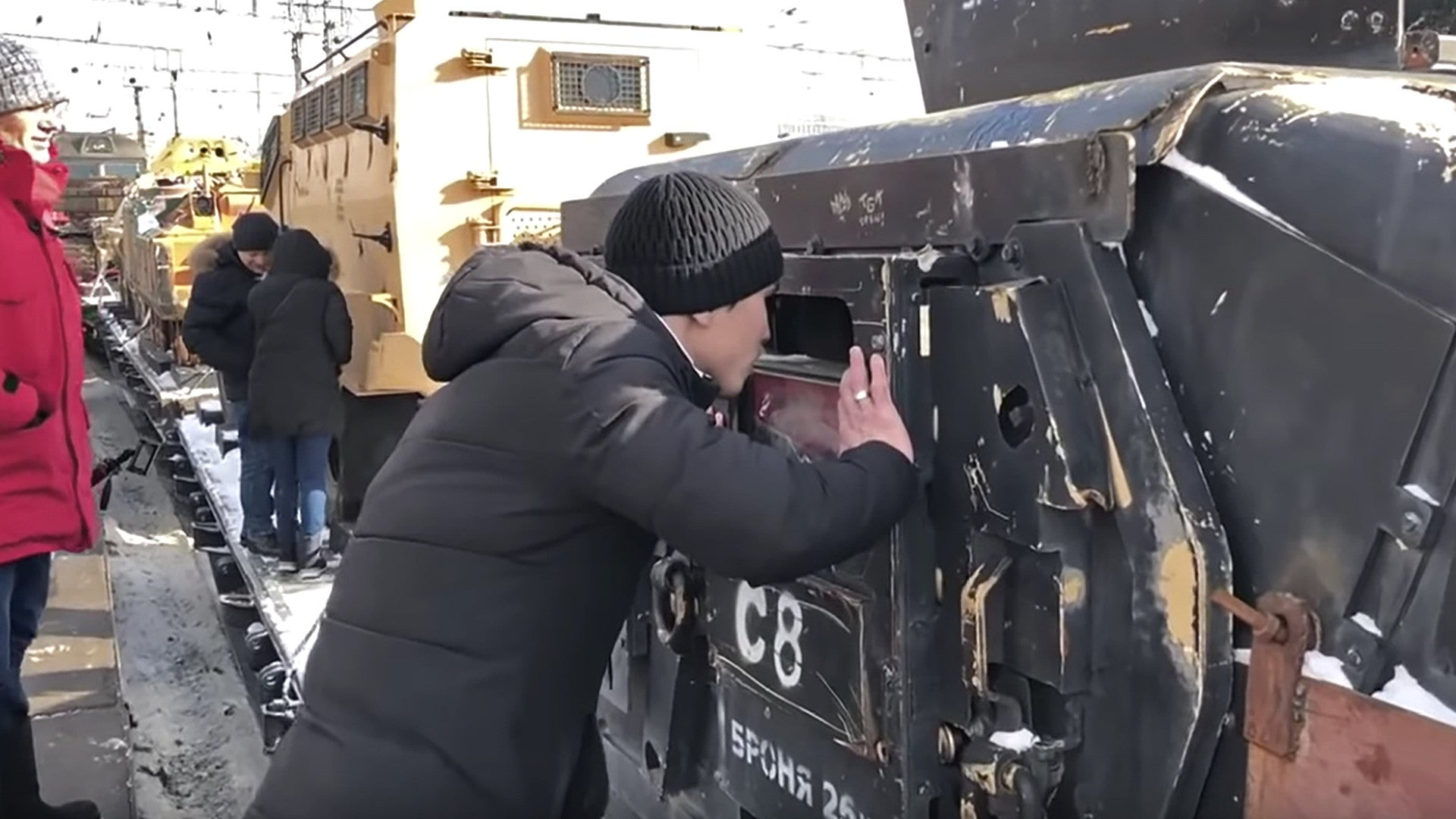A special train carrying a propaganda roadshow is currently wending its way through the Russian countryside carrying trophies the country has collected after more than four years of fighting in Syria. The spectacle is certainly “on brand” for Russia, already well known for its huge military parades, and in line with President Vladimir Putin’s growing appeals to nationalist sentiment to sustain his regime.
The entire “experience,” which consists of 10 coaches with various small items and exhibits, nine flatbed cars carrying captured vehicles of various descriptions, and an empty flatbed car to act as a rolling stage for song and dance routines, is dubbed “Syrian Fracture.” The associated circular logo features a light blue silhouette of an Su-34 Fullback combat jet on top of a red, white, and black of the Syrian flag.

Operated by the Russian military, the train left the Moscow area on Feb. 23, 2019, which is Defender of the Fatherland Day in Russia. The plan is for the train to hit a total of 61 cities, including in the country’s Far East regions, during a run that will last 75 days. At the end, the procession will have returned to Moscow just in time for the country’s major annual Victory Day celebrations, commemorating the Soviet Union’s defeat of Nazi Germany in World War II, which occurs every year on May 9th.

The vehicles and items on board, which include everything from tanks to small drones to deactivated improvised explosive devices, had previously been at the Kremlin’s Patriot Park military theme park at Kubinka just outside the country’s capital. The train carries just a portion of the full collection of war trophies, which first went on display in 2018.
You can see a full breakdown of the “Syrian Fracture” train and its contents from Zvezda, the Russian military’s official newspaper, below:

The limited space on the train didn’t prevent the Russians from putting together a representative selection of items. The most eye-catching is probably the “Eagle Head” improvised armored truck that the Kurdish People’s Protection Units, also known by the Kurdish acronym YPG, had operated in northwestern Syria.

There are a number of other unusual items that speak to the number of armed factions and terrorist groups involved in the conflict in Syria and their various international supporters. One of the train cars has a Scottish-made Aardvark mine-clearing vehicle of unclear origin. It seems probable that this came to one of a number of militant groups by way of Jordan.
There are also some curious small arms, including at least one example of a World War II Nazi StG 44 assault rifle. The Syrian government acquired these, along with a number of ex-Nazi armored vehicles and other weapons, from East Germany in the 1960s. The small arms collection in one of the coaches also includes older American-made M16A1 rifles that the United States or its Middle Eastern allies likely distributed to one of many Syrian groups fighting the regime of dictator Bashar Al Assad or ISIS terrorists. There are heavier infantry weapons, too, including mortars, recoilless rifles, and a TOW anti-tank guided missile launcher, a weapon that has become particularly iconic in Syria.

There is also a Soviet-era T-55MB tank and a Czechoslovakian OT-64 SKOT wheeled armored personnel carrier. Rebels captured these from Assad’s forces before the ended up back in the hands of pro-regime elements.
Pro-Assad units captured a huge number of T-55s, OT-64s, and other armored vehicles near the Jordanian border in July 2018. Rebels had abandoned them after government-aligned forces launched a major offensive to retake the southern city of Daraa and the surrounding environs, backed by Russian airpower.
As far as larger armored vehicles go, the train also has a Turkish ACV-15 tracked armored personnel carrier, which is based on the American M113. This was almost certainly abandoned by Turkish forces during one of that country’s campaigns in Northern Syria.
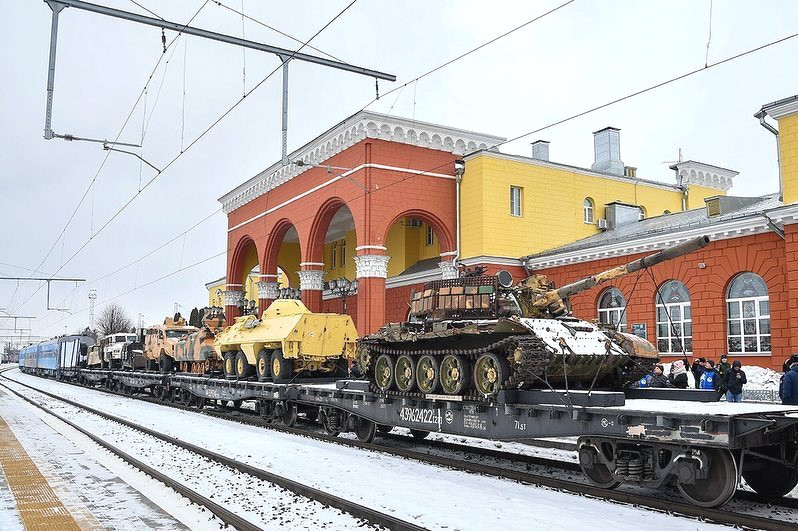
The bulk of the rest of the vehicles are a mix of common armored and unarmored trucks found across Syria. These include the ubiquitous Humvee and Toyota Land Cruiser. The United Arab Emirates-made Panthera F9 and the South African-designed RG-31 represent some of the more purpose-built, mine-resistent armored vehicles found in the Syrian conflict. There is also a less well known Chinese ZX Grand Tiger pickup and a civilian American-made Jeep Cherokee that some faction converted into a vehicle-borne improvised explosive device (VBIED).

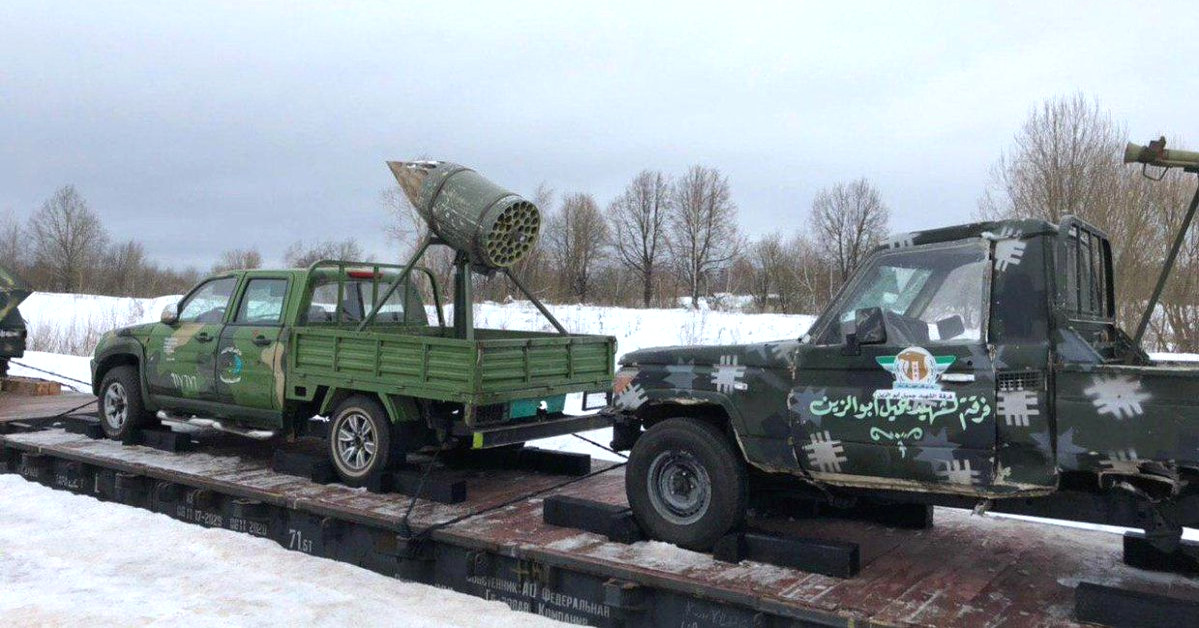

The story behind the black Humvee is particularly indicative of the fighting in Syria. The United States originally supplied this example to Iraqi special operations forces. ISIS then captured it and turned it into a VBIED, which Assad’s forces subsequently captured and turned over to the Russians.
But as interesting as the artifacts certainly are, the train’s obvious purpose is to paint a picture of a triumphant Russian military in Syria, despite the conflict continuing to drag on without any clear end in sight. Russia has certainly solidified Assad’s position over the past four or so years, but the regime in Damascus still has a long way to go to regain full control over the country.
U.S. President Donald Trump recently committed to leaving a token force in the country, despite earlier pledges for a full withdrawal, which will continue to work with American allies and local partners in the eastern portion of country. An American garrison near the Iraqi and Jordanian borders that has been a thorn in Assad’s side for years doesn’t look to be going anywhere any time soon, either.
This is to say nothing of Iran’s involvement in Syria, which has led to a low-grade, persistent conflict between the Syrian regime and Israel, and Turkey’s occupation of significant portions of Northwestern Syria. Russia itself has been jostling with Iran for the title of Assad’s primary benefactor. None of this is particularly in line with Russian President Vladimir Putin’s most recent declaration of complete victory over anti-regime terrorists in December 2017.
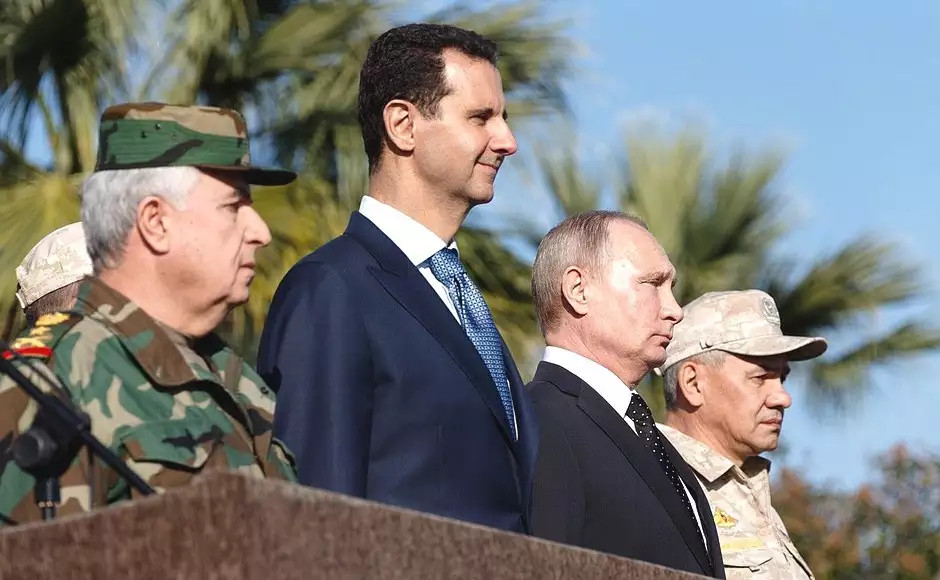
The vehicles on the train that originally came into Syria as aid to forces the United States or its allies support also feeds the Kremlin’s narrative that the U.S. government is backing terrorist groups in the region. Russian officials routinely make these
conspiratorial claims without providing any evidence to deflect from its own malign behavior in Syria and complicity and active participation in the Assad regime’s brutal offensives.
But beyond the Syria conflict itself, the train-based show is also just part of Putin’s ever-increasing appeals to national sentiment to cement his own position in Russia. This has included weaponizing history, especially that of the Second World War and the Soviet Union, and state sponsorship of movies and other popular media that espouse the Kremlin’s various foreign and domestic policy positions.
Despite the name, Russian authorities are clearly billing the “Syrian Fracture” as a family event, sure to bring smiles to adults and children alike. From the pictures of the train’s stops so far, people certainly seem to be braving the winter weather to come out and see the spectacle for themselves.
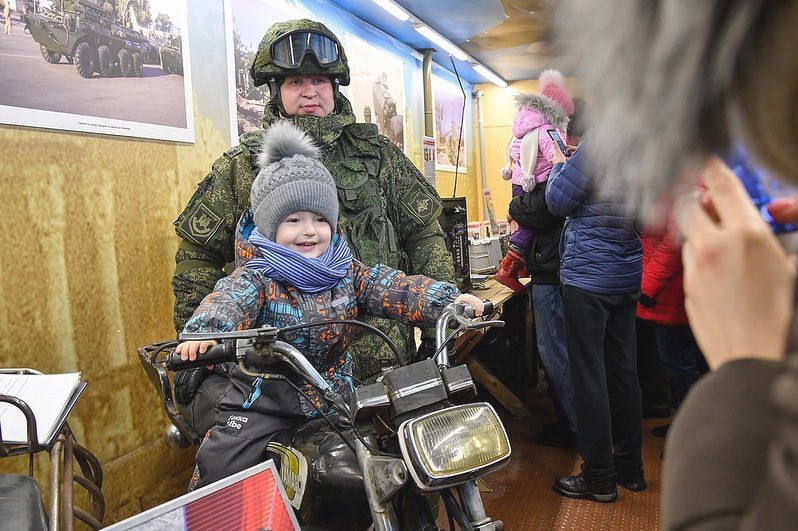
Just using a train for the propaganda tour at all seems particularly Russian, with rail remaining a particularly important mode of transportation in the country for both civilian and military purposes. In 2016, the Kremlin reactivated a pair of special armored military trains and, for a period, Russia considered plans for new rail-based intercontinental ballistic missiles. The train-based exhibits certainly help bring the general ambiance of Patriot Park to Russians in more remote areas who can’t make the trip to Kubinka.
In January 2019, the Russian military acquired a number of World War II-era T-34/85 tanks from Laos as part a sale of newer tanks to the small Southeast Asian country. The Kremlin shipped them from the Far East to a depot closer to Moscow via train, which became an impromptu propaganda tour itself and may have prompted the decision to kick off the new rail-based show.
If the “Syrian Fracture” garners enough interest on its country-wide trip, it seems likely that we might see more propaganda trains roll out in the future.
Contact the author: jtrevithickpr@gmail.com
